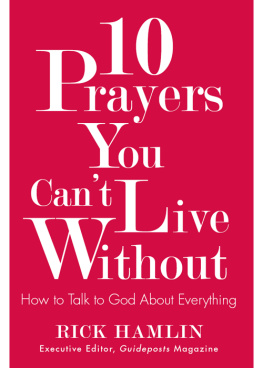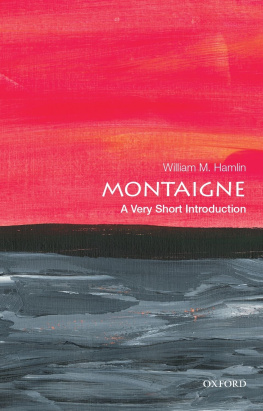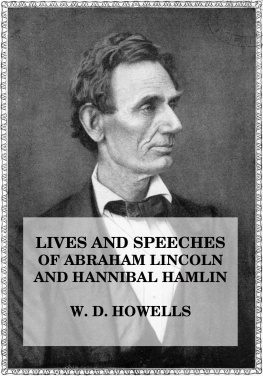Crossroads at Clarksdale
THE JOHN HOPE FRANKLIN SERIES IN AFRICAN AMERICAN HISTORY AND CULTURE
Waldo E. Martin Jr. and Patricia Sullivan, editors
2012 The University of North Carolina Press
All rights reserved
Designed by Jacquline Johnson
Set in Ehrhardt MT by
Tseng Information Systems, Inc.
Manufactured in the United States of America
The paper in this book meets the guidelines for permanence and durability of the Committee on Production Guidelines for Book Longevity of the Council on Library Resources.
The University of North Carolina Press has been a member of the Green Press Initiative since 2003.
Library of Congress Cataloging-in-Publication Data
Hamlin, Franoise N.
Crossroads at Clarksdale : the black freedom struggle in
the Mississippi Delta after World War II / Franoise N.
Hamlin.
p. cm. (The John Hope Franklin series in African
American history and culture)
Includes bibliographical references and index.
ISBN 978-0-8078-3549-4 (cloth : alk. paper)
1. African AmericansCivil rightsMississippi
ClarksdaleHistory20th century. 2. African
AmericansSegregationMississippiClarksdale
History20th century. 3. Civil rights movements
MississippiClarksdaleHistory20th century.
4. SegregationMississippiClarksdaleHistory
20th century. 5. National Association for the Advancement
of Colored People. Coahoma County BranchHistory.
6. Henry, Aaron, 19221997. 7. Pigee, Vera Mae, 1924
2007. 8. Clarksdale (Miss.)Race relationsHistory
20th century. I. Title.
F349.C6H36 2012
323.1196073076244dc23
2011045259
The author wishes to thank the National Association for the Advancement of Colored People for authorizing the use of Table 2 and Figures 3.4 and 4.2.
Poems in chapter 5: Elnora Fondren, Changing the American Stage, and Allan Goodner, Segregation Will Not Be Here Long, from Letters from Mississippi, edited by Elizabeth Sutherland Martnez. Original edition 1965 and renewed by Elizabeth Sutherland Martnez. New edition 2002 by Elizabeth Sutherland Martnez. Reprinted with the permission of The Permissions Company, Inc., on behalf of Zephyr Press, www.zephyrpress.org.
16 15 14 13 12 5 4 3 2 1
FOR ELIJAH
In memory of
Corine Bradley (1929-2005)
Aaron E. Henry (1922-1997)
Vera Mae Pigee (1924-2007)
Mississippi has always been a bewitched and tragic ground, yet its also a land of heroism and nobility; a land which has honored those of us of all our races who possess the courage and the imagination of the resources given us on this haunted terrain. I love Mississippi, and I hope the best of it will endure.
Willie Morris (1986)
Contents
Figures, Maps, and Tables
Figures
FIG. 2.1. Vera Pigee at work in her beauty salon
FIG. 2.2. Vera Pigee leading an adult voter registration class
FIG. 3.1. Mary Jane Pigee and Guy Carawan at the first integrated concert in Clarksdale
FIG. 3.2. Vera Pigee and NAACP attorney Constance Baker Motley
FIG. 3.3. Aaron Henry testifying before the Democratic Party Credentials Committee
FIG. 3.4a. A Coahoma County Federated Council of Organizations flyer
FIG. 3.4b. Another CCFCO flyer
FIG. 3.5. Vera Pigee working with volunteers
FIG. 4.1. Petition by Picket
FIG. 4.2. Local NAACP flyer showing Aaron Henry on the city prison gang
FIG. 4.3. Police posing for a photograph as ministers march to a local church in Clarksdale
FIG. 4.4. Aaron Henrys Fourth Street Drugstore
FIG. 4.5. Local children at the COFO community center during Freedom Summer
FIG. 4.6. Staff meeting of COFO volunteers in Clarksdales Freedom House
FIG. 4.7. Aaron Henry with Police Chief Ben C. Collins and an unidentified man
Maps
Mississippi
The Crossroads and Downtown Clarksdale
Tables
1. NAACP Membership in County and City Branches in Mississippi, 1956 and 1957
2. Declining NAACP Membership in Southeastern Region, 19551957
3. Federal Figures Documenting School Desegregation Compliance in 1966
4. Racial Demographics in the Seven Clarksdale Elementary Schools in 1972
5. Ratio of Black Children to White Children from the Spring Semester Figures for 19771979, 19821987, 1993, and 19951997 in Clarksdale Public Schools
6. Desegregation in Clarksdale Public Schools, Fall Semester Figures for 1977, 1979, and 1980
Preface
It is by knowing where you stand that you grow able to judge where you are. Place absorbs our earliest notice and attention, it bestows upon us our original awareness; and our critical powers spring up from the study of it and the growth experiences inside it.... One place comprehended can make us understand other places better. Sense of place gives us equilibrium; extended, it is sense of direction too.Eudora Welty
Drive the approximately seventy miles south to Clarksdale, Mississippi, from Memphis, Tennessee, on U.S. Highway 61 through Tunica County. Fields dominate the landscape, broken only by lines of trees between properties or crops. Depending on the time of year, crop dusters might zigzag low across the asphalt and telegraph poles as they drop their loads of fertilizers and pesticides on the once-rich soils of the Mississippi Delta. In the fall, the fields dress in white as cotton bursts from straining bolls.
Coming in from the east along Route 6 from Batesville, the view is more dramatic. Fields still dominate this landscape too, but the road winds gracefully around smaller plots, where the trees seem taller and the buildings hug the road. At night there is no light, no distinction between the land and the heavens. The lights from Clarksdale, Coahoma Countys seat, illuminate the sky, like a stadium rock concert, miles before the city comes into view. Turning the last bend, hidden by a bank of tall mature trees, the city crouches low on the horizon.
My favorite Delta entrance, though, is from the south. Route 49 East cuts through the Delta diagonally from Yazoo City to Clarksdale. Yazoo City sits amid rolling hills and marks the southern tip of the Delta. The traffic falls away
Mississippi
as the car points north out of the city and the landscape suddenly straightens, like a person stretching from top to toe in the first waking moments after a good nights sleep. The topography marks the location. Swamps sometimes come perilously close to the blacktopped two-lane road. Driving in the early hours of the morning, mists hover over the murky waters and kudzu drapes the trees, reminiscent of the bayous of Louisiana or Florida. Behind those small untamed swaths of nature, the fields take over for miles and miles, interrupted only by small towns of rundown buildings and wandering, emaciated dogs.
On the way to Clarksdale on this road, Parchman, the state penitentiary, appears on the left, just before the Coahoma County line. Fenced in by barbed wire, razors, and steel, the prison is huge, spread over several hundred acres in satellite compounds, surrounded by a treeless, barren expanse, a no-mans-land. It scars the landscape. Leaving the prison behind, Clarksdale is only thirty miles down the road and comes as a welcomed sight. Those one hundred miles are emotionally draining. It is very easy to fall in love with the beauty of the Delta, its uniqueness and its landscape. The reality of its poverty and exploitation, visible from the road, strikes a blow that leaves many visitors breathless. It is one thing to travel through, pausing to let the senses experience the Deltas history, and quite another to eke out a living, or struggle with the demons of the past and present, as a resident.










